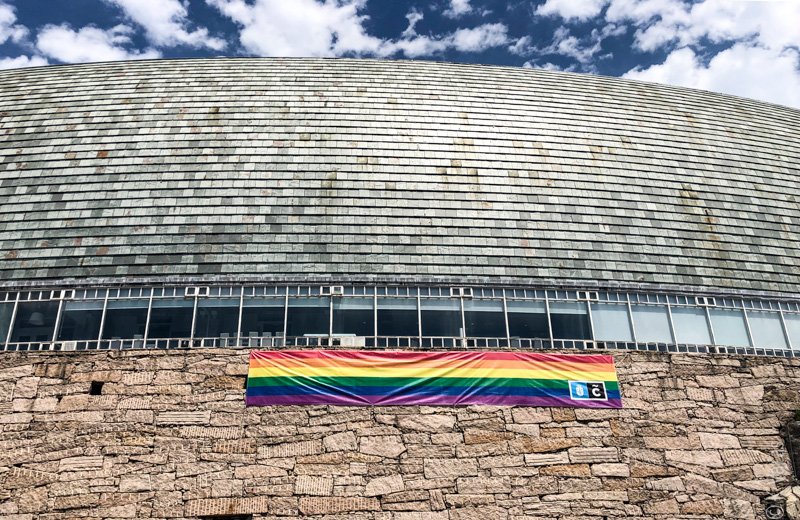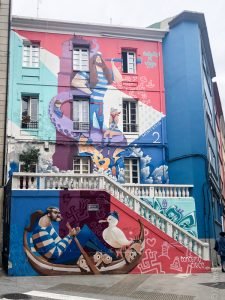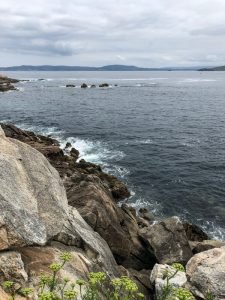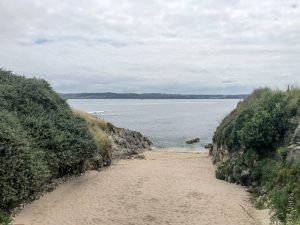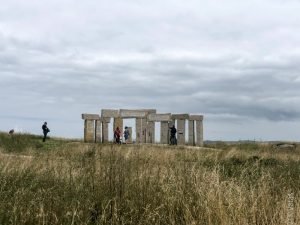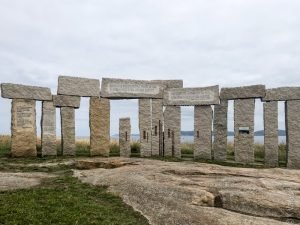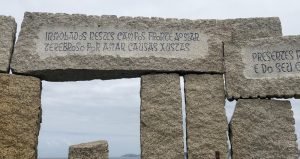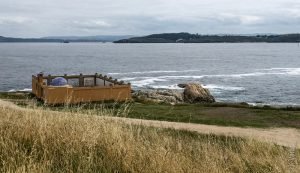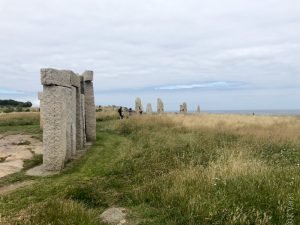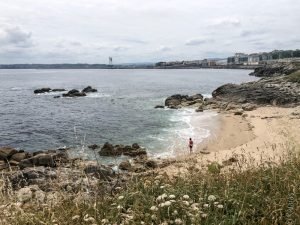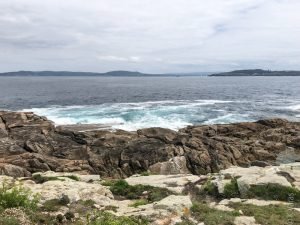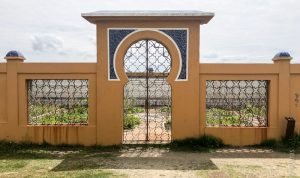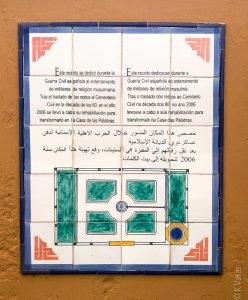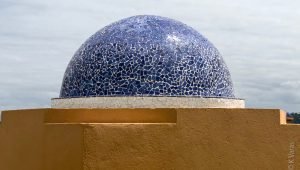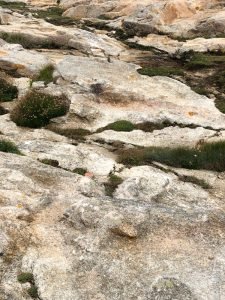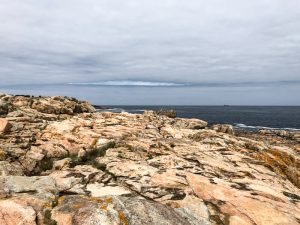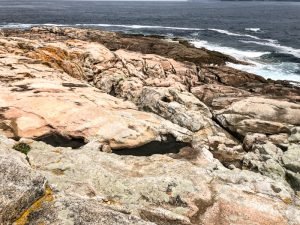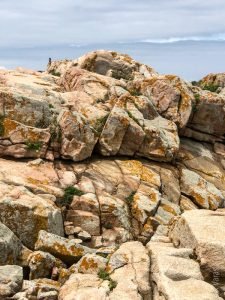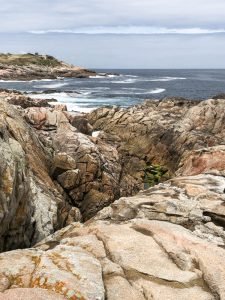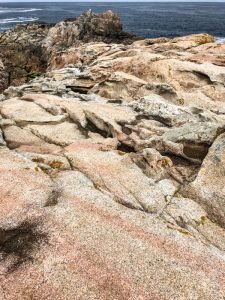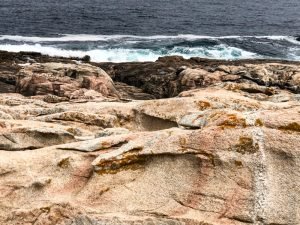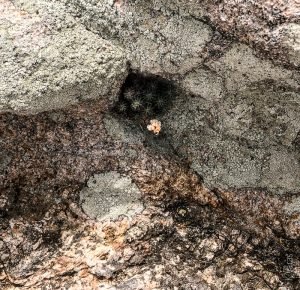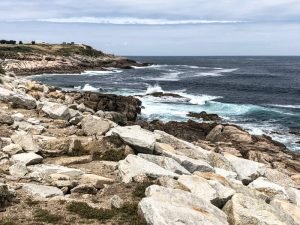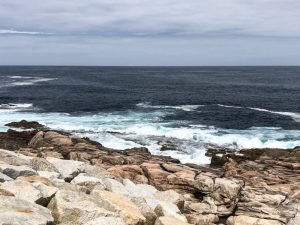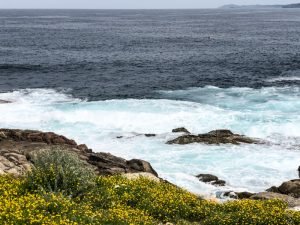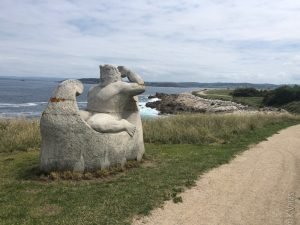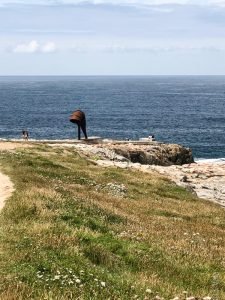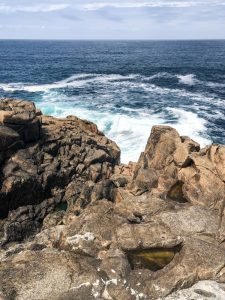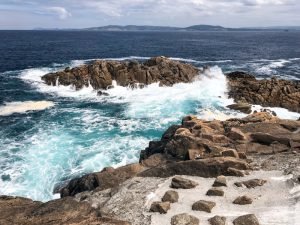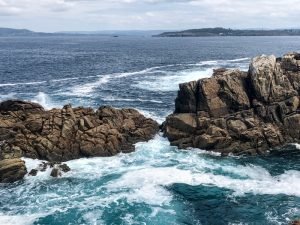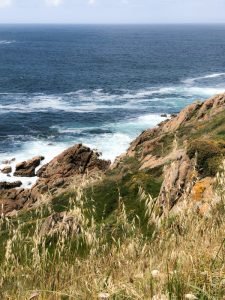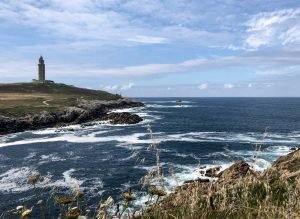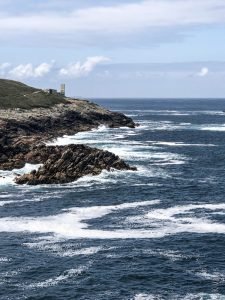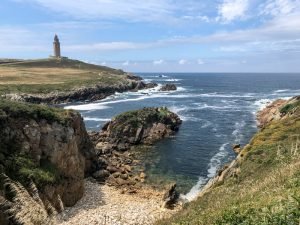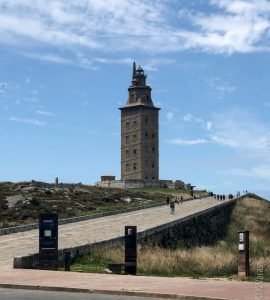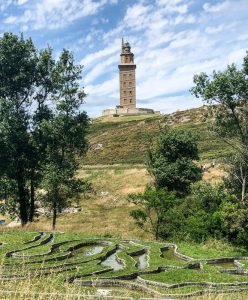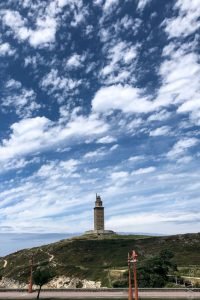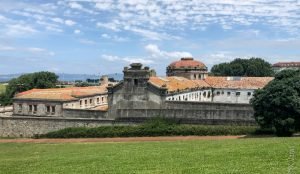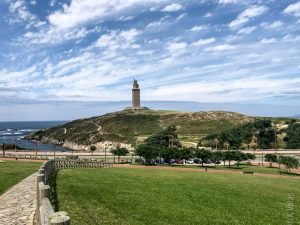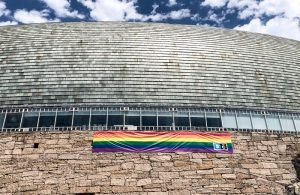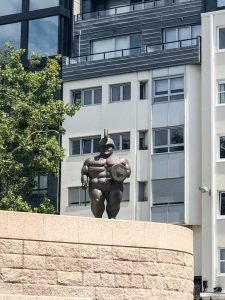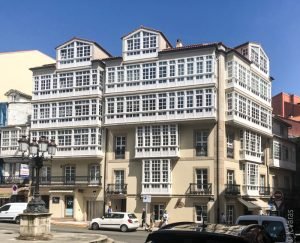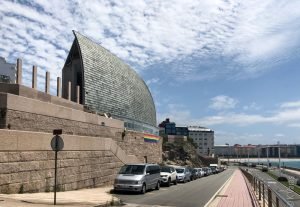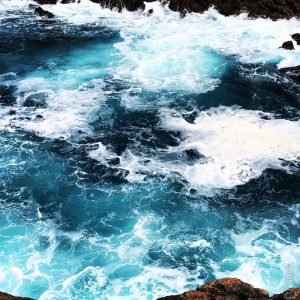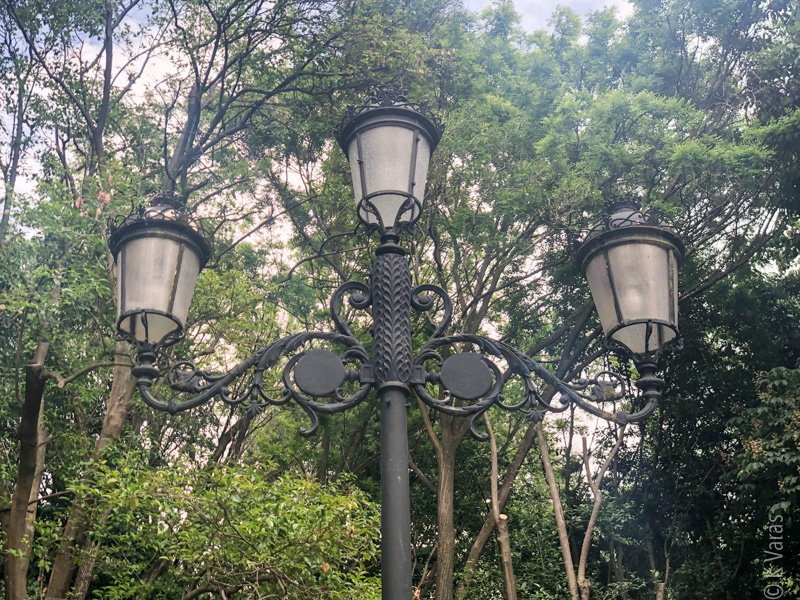
Punta Herminia
As expected, I made another attempt at conquering the Paseo Maritims and this time, I have to admit, I got much further, and that’s saying something considering how warm the day was. I did make the mistake of not taking any food with me, stupidly not learning from experience and had to spend a silly amount of time trying to find a place to eat. I think there is a business opportunity here for an entrepreneurial sort who could start a food truck of some sort to cater to negligent tourists who don’t plan ahead. But I digress.
Punta Herminia is the northernmost part of the A Coruña peninsula and, with the exception of one small urbanization (Adormideras which translates to poppies in English but it sure sounds like “sleepy place”, dormir is to sleep in Spanish … maybe it’s because poppies->opium->sleep?), it is a green hill surrounded by gorgeous rocky shores and dotted with sculptures and other monuments.

Having already been down the nearest to Fely’s house portion of the Paseo, I took a bit of a shortcut and got myself close to the Playa de San Amaro I had reached before. This time I walked by the fancy-looking Club del Mar which sits on one side of the beach but I wasn’t really interested in the crowds there. We all know how I feel about crowds these days, don’t we? Plus I had a long road ahead of me. The first surprise was seeing a sculpture on the side of the walkway which came with no name or explanation. Further research revealed little other than the creature’s name, Serea, and this suggests to me that it must be some sort of mermaid whose story is, unfortunately, still a mystery.
The Paseo Maritims narrows as it skirts the aforementioned Adormideras, an architectural abomination if there ever was one, but soon I was faced with the wide open spaces of the Punta Herminia and its very tall grass (I wonder if it was still waiting for the first mow of the summer … or maybe not?). What the grass did, to be honest, was make the sculptures and other points of interest peak above its gently moving fronds, giving the whole area a somewhat surreal feel. But before I had to choose a path there, I did get a glance at the local beach, Praia de Adormideiras, that promised to be a perfect place to get some sun away from big crowds.
Next were the stones that from a distance reminded me of Stonehenge though, up close, are nothing like it. I blame the tall grasses for my error. There is much history here and a somber feeling is inevitable. Similar to the big fingerprint in Bilbao, Monumento aos Fusilados is dedicated to the hundreds of people executed on this spot by Franco’s forces during the Civil War. Those killed were local republicans, trade unionists, and socialists, who were taken from the A Coruña jail and walked over here, sentenced to death for their loyalty to the republican government. The monument, erected in 2001, was designed by Isaac Díaz Pardo and it is made up of granite blocks with red paint stains symbolizing the blood of those shot. The inscription reads:
Sacrificed in these fields in front of the dark sea for loving just causes … they are preserved in the memory of the people of the municipality of A Coruña.
There are also two poems carved into the slabs, one by Federico García Lorca and the other by Uxío Carré Alvarellos. All throughout Spain monuments like this one have been erected since Franco’s death as the country comes to terms with its violent past and tries to, first and foremost, acknowledge the harm his regime has done.
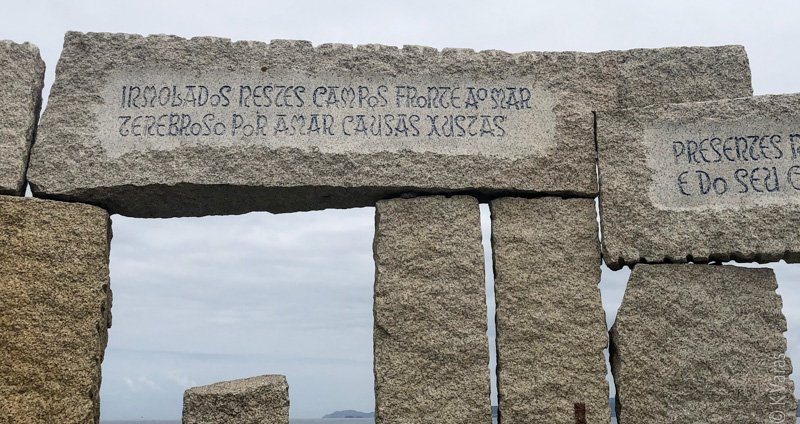
Nearby I found myself captivated by the incredible colours of the cupola over a structure belonging to the old Moorish cemetery built during the Civil War to bury, ironically, Muslim soldiers who fought on the side of Franco’s army. The reasons for this were twofold: because Morocco was a Spanish Protectorate at the time, those in the army there were already conscripted and since their generals were fascist-supporters, the soldiers had little choice but to fight for Franco. Others saw the conflict as an economic opportunity rather than an ideological struggle and since the fascists paid better, they chose the bigger pay cheques. The cemetery is a tiny one and there aren’t really any remains there anymore, those were moved in the 1960s to a different location. Now all that is left is a garden with its interior walls covered in engravings by Xoán Viqueira. The engraved texts talk about the city’s origins in Greek, Latin, Arabic, Gaelic, and ancient Castillan, all of them translated into Galician and Spanish. There are also some 250 Galician and Spanish words with origin in the Arabic language, hence the name Casa de Palabras — House of Words). I really wish I could have been allowed inside to see these up close.
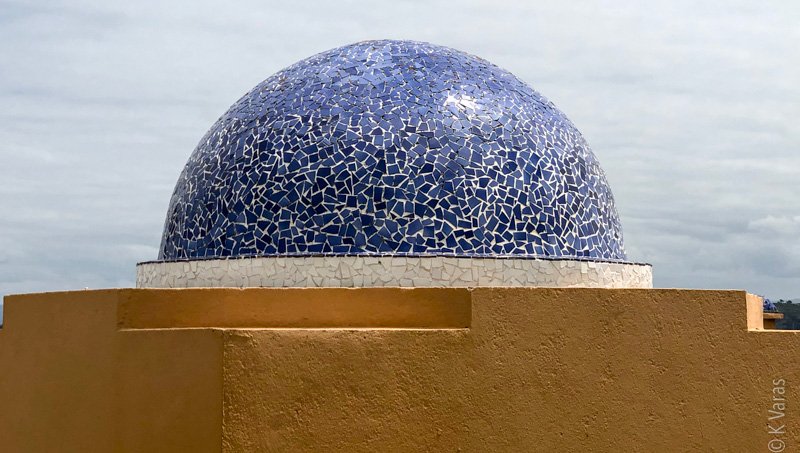
I kept walking towards the tip of the peninsula where another grouping of stones beckoned. Menhires Pola Paz (Menhirs for Peace) is a collection of twelve menhirs that represent a family. A menhir is a tall standing stone, usually dating from the Bronze Age. These ones aren’t quite so old but they are a homage to the Celtic roots of Galicia and each one has a rectangular opening carved into it to frame a view to the sea. Had I known that was the holes’ purpose I would have gotten closer and taken more pictures. Menhirs appear to be a relatively common archeological finding in this part of the world so I suspect I will get to see a few more, if I find a historical museum nearby.
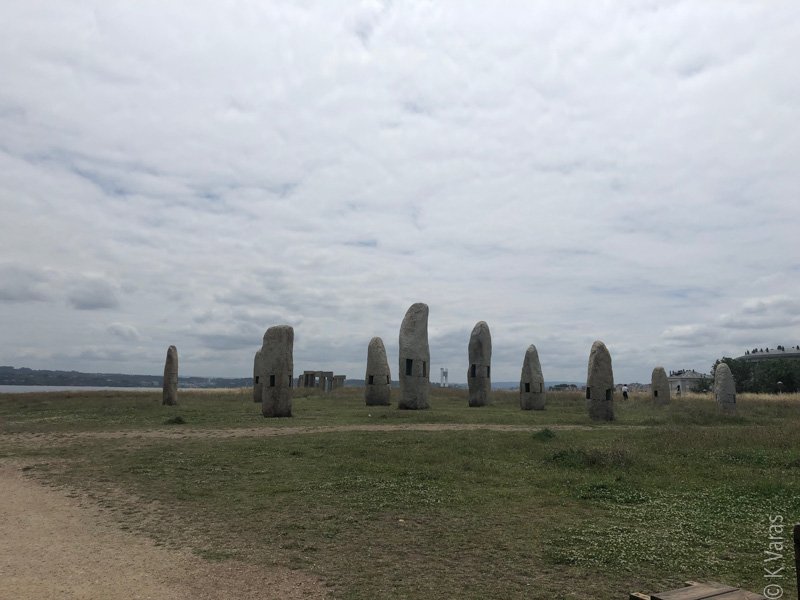
The next curiosity was a seemingly random sculpture of Hercules on a boat (Hércules na nave dos Argonautas) … I have no idea what its meaning is but there he sits, surrounded not by waves of water but waves of the tall grasses. Very odd indeed. A little further on I came to A Copa do Sol, another piece dedicated to Hercules (yes, there is a theme here), and refers to the legend of his crossing the ocean with the help from Helios, the Sun God, and his sun chalice.
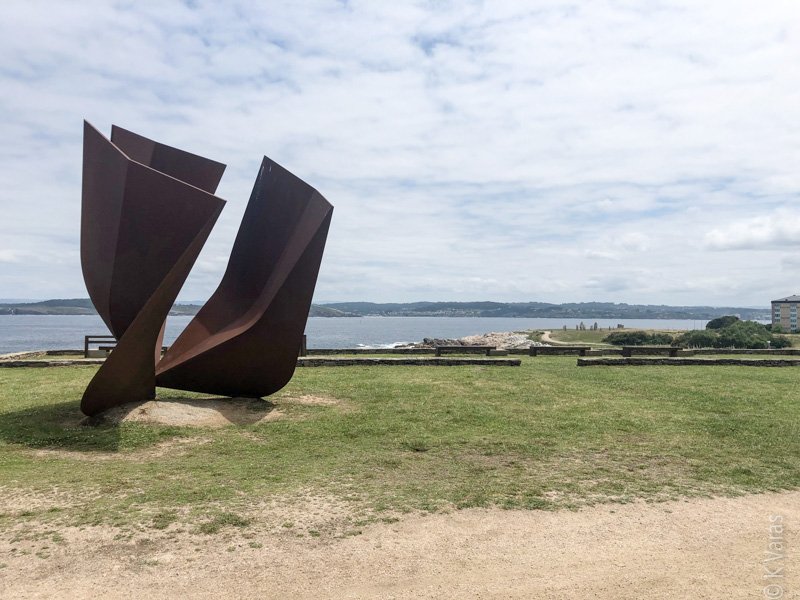
But wait, I wasn’t finished yet. There were still the Casas Saunas, their relationship to Hercules totally lost on me, and the truly cool Caracola, situated at the very tip of the peninsular. La Caracola is a massive modern sculpture by Moncho Amigo that recreates a huge shell of a mollusk made of corten (copper chromium alloy) steel and it symbolizes the Horn of Plenty (Cornucopia), which our hero, Hercules, ripped off from the head of the river god Achelous as they wrestled. I walked right to the edge of the cliff in front of the Horn, and I have to say the views from there were magnificent. There is a reason my phone is complaining about lack of space again.
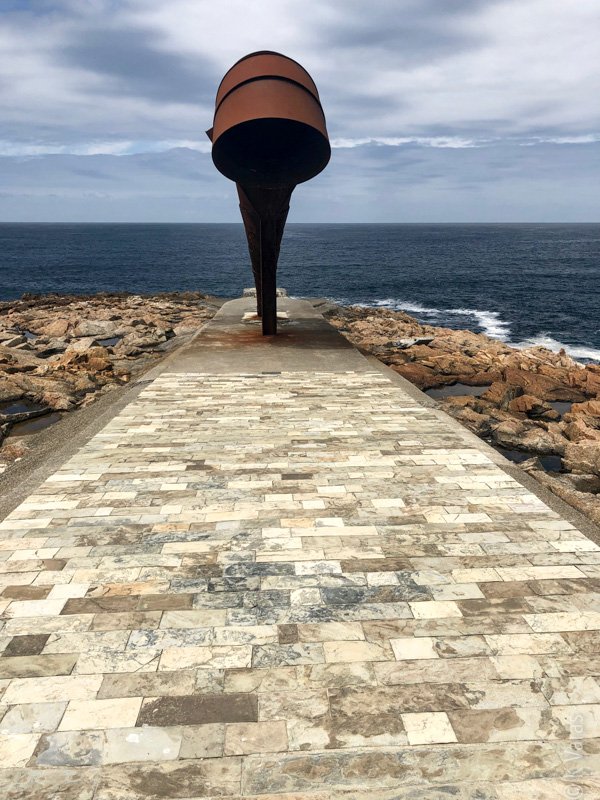
From all these spots in the Parque Escultórico da Torre de Hércules as the area is also called, the main attraction can be seen, and it is, of course, the actual Torre de Hércules. This lighthouse sits across a little inlet from Punta Herminia and truly commands the peninsula. It is 55m tall and is the world’s oldest, continuously providing life-saving light to mariners for close to two millenia. It was originally built in the first century (!) and later fully renovated in 1791. It is also very photogenic. Unfortunately, by the time I got close to it, I was quite tired and hangry, so I had to forego a visit inside (it is possible) until a later date. If I do decide to climb it eventually, I should probably start my day with the tower and not leave it to the end of a very long walk. I hate to admit it but I do have limits so I just had to make do with photos.
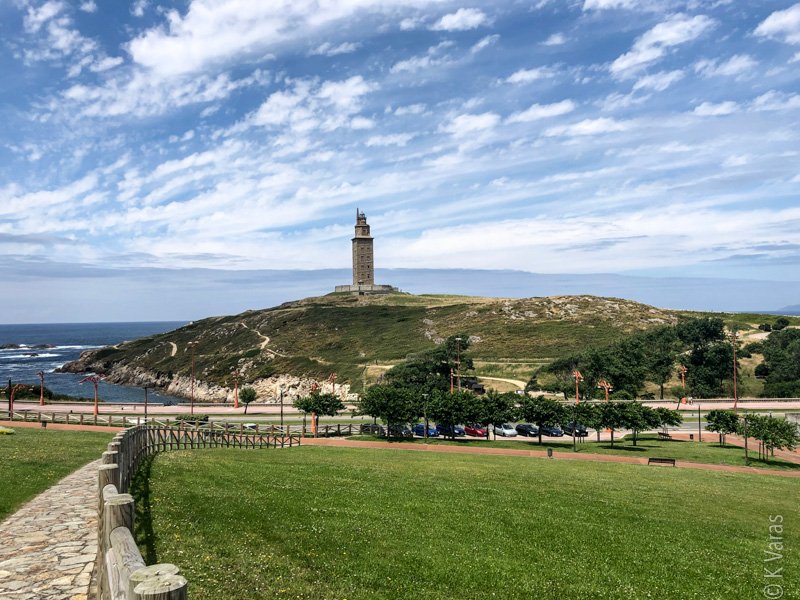
Now my goal became finding a place I could rest my weary bones and enjoy a clara and some food. This, too, became a challenge. The one place I found on Google that looked very inviting was, by the time I got to it, totally full, and it became rather obvious rather quickly that most of the restaurants in the area were already very busy. I really must start my meal searches at an earlier time. You wouldn’t think Thursdays were so popular for restaurants here but they are, they definitely are. Not knowing what to do, I found myself at the same little bar Fely and I had beers at a few days prior and there I enjoyed a plate of scallops which were delicious. I was just happy to sit for a bit and watch Orzán Bay while sipping on an ice-cold clara and eavesdrop on a Spanish young man first meeting his Dutch (?) girlfriend’s parents. It was just like playing a part in a movie …

On my long way home, I walked by Domus, the science museum, but this, too, I had to leave for another day (or visit). I did not know it was a museum as I passed by, but I was impressed by the building’s architecture as well as its pride flag. It seems that every city I’m in, there is Pride Month going on, similar to the book fairs. I find this very heartwarming and I applaud Spain for being so progressive when it comes to LGBTQ+ rights.
